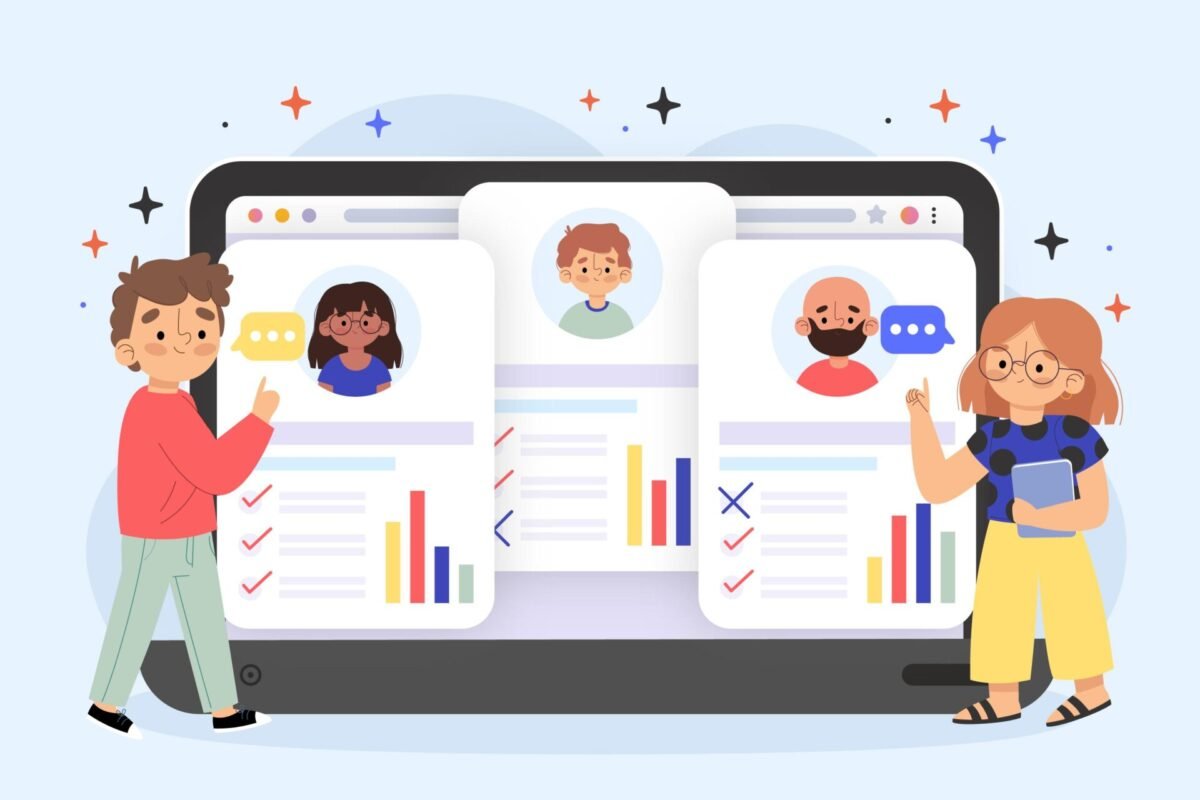A B2B buyer persona is more than marketing fluff, but also a crucial tool for better understanding your target audiences in a business-to-business context. This persona goes beyond basic demographics; it digs deeper into the psychological, behavioral, and emotional makeup of your ideal customers.
Without a detailed buyer persona, you’ll struggle to convert leads into customers and may end up wasting resources inefficiently. So, let’s learn how this is important along with the complete steps below!
Key Takeaways:
- A business-to-business buyer persona is a research-based background format that reflects a company’s intended target audience.
- It needs a multi-step approach to provide a detailed understanding of the target audience.
- This persona aims to enhance marketing effectiveness and prioritize ideal customers.
What is a B2B Buyer Persona?
A business-to-business buyer persona is a fictional profile that represents your ideal business customer. It’s built using real data and market research insights to guide marketing and sales strategies. In fact, 24 percent of companies have generated more leads by using buyer personas.
Simply put, this buyer persona thoroughly explores who they are, their preferences, habits, needs, problems, and any related decision-making authority.
However, it’s not a quick process, as it requires a significant amount of time, effort, and research. The buyer persona is also not static; it should be refined and updated over time as businesses learn more about their customers.
Also Read: Marketing Analytics Tools: 10 Expert-Recommended Options to Try
The Importance of B2B Buyer Persona Research
Businesses should conduct business-to-business buyer persona research to create useful, focused, and actionable strategies. It’s not only important to understand the business’s target audience, but also to allow them to craft more compelling and personalized marketing messages for more effective engagement and conversions.
How to Create a B2B Buyer Persona?
A business-to-business buyer persona needs a strategy because it’s not just a basic profile, but rather a way to drive robust business growth. Without a smart way, this persona is just surface-level information with no clear direction. To get it right, here’s the effective strategy to follow.
1. Define Your Audiences
Start by gathering complete information about your existing and potential customers based on facts. You can use both qualitative and quantitative data sources to get a clear picture of your customers. Track the different audience segments of their demographics, job roles, company size, industry, and how they interact with your product or service.
2. Analyze Collected Data
Once you’ve gathered the information, it’s time to turn those raw inputs into an actionable review. Analyze the data to identify patterns and similarities such as recurring demands, preferences, or behaviors. From there, organize the findings based on key persona attributes.
Also Read: Must Try! 10 Most Credible Business Process Mapping Tools
3. Create a B2B Buyer Persona Profile
Then, create a detailed and realistic profile of your ideal customer in a well-structured format. To achieve this step, you can implement the following elements to make them feel more real and relatable.
- Name: Create a fictional profile with a memorable name. This will be easy to reference internally by the team.
- Job Title: Specify the customer’s job title and responsibility. This will help you to determine their influence on the purchase decision.
- Demographics: Listing information like age, gender, education, and location to give a clear persona’s profile.
- Company Information: It includes the business’ details of type, size, and geographic location. This is a crucial way to understand the customer’s business environment.
- Motivation: Describe the consumer’s underlying desires. It allows you to position your product as a solution to their top priorities.
- Pain Points: Define the persona’s specific problems that your business can solve. It helps you tailor the marketing strategy to address the particular points.
- Personality Traits: Showcase top characteristics influencing their decision-making style, like being detail-oriented or risk-averse.
Also Read: AI Market Research: 10 Explosive Changes Reshaping the Future
B2B Buyer Persona Examples
To help you better understand the structure, here is a real example of a business-to-business buyer persona to watch out for.
Scheme: “John Flakes, a product marketer at a tech start-up based in San Diego, is looking for a modern analytics tool for marketing campaigns.”
- Name: John Flakes
- Age: 36
- Location: San Diego Valley, Los Angeles
- Job Title: Chief Product Officer
- Company: Tech start-up with 250 employees
- Motivation: John wants to market trend analysis smoothly and keep the company using modern technology with budget-consciousness.
- Challenge: John finds it tough to overcome the integration challenges of the modern analytics tools, as the company uses outdated software.
- Personality traits: Very analytical, focused on details, and takes risks.
Also Read: Guide on How To Start A Lawn Care Business for Beginners
Let’s Make an Effective B2B Buyer Persona!
In summary, the role of the business-to-business buyer persona is crucial to a company. It serves as a foundational tool that brings clarity, focus, and measurable impact across all areas that engage with professional customers. You can use a professional font collection from Letterara to help your buyer persona scheme stand out visually. You can enjoy the legible character font with simple installation and a versatile license option for your project seamlessly. Let’s visit the website and get the freebies for demos!

